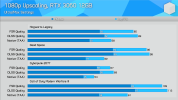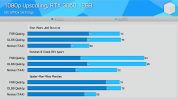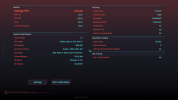According to a known dev at era 8-bit 300 TOPS is equivalent to a 3090Ti, and about 20% lower than a 4080. He thinks that's well enough to properly reconstruct to 4K similarly to those GPUs using DLSS.
Even if Pro falls short of 3090/TI in RT performance and hits more closely to a 3080/TI in RT performance, that's still a very respectable upgrade for this generation of consoles. More stable framerates, higher resolution bounds, and nicer RT sounds pretty good to me.
The unknowns so far...
* NVMe size
* Any I/O and compression block improvements
* Ram size, bus width, and bandwidth improvements.
* VRR improvements.






